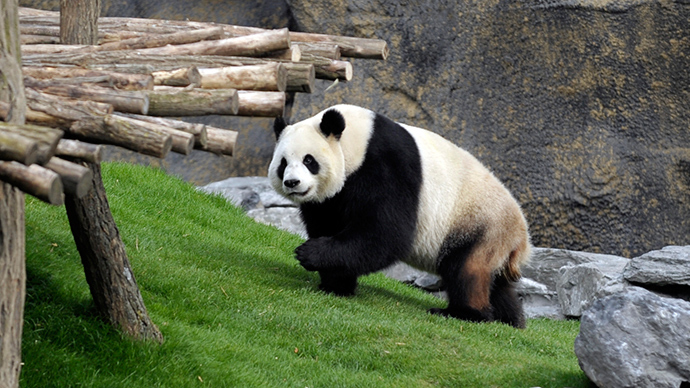Scientists reveal how pandas manage to survive on bamboo diet

Giant panda is the most vegetarian bear as it sticks to a bamboo diet which theoretically is not enough for their survival. But it appears they are very efficient in saving energy on everything – even on younglings’ size.
Pandas are unique animals – from a scientific point of view they are predators because their digestive system can process meat. But instead of eating animal food these bears prefer low-energy bamboo.
Chinese scientists from Chinese Academy of Sciences' Institute of Zoology in Beijing radio collared six pandas (three male and three female) in the Qinling Mountains of China and observed them for six years to complete the study published on Friday in the Science Magazine .
Researchers found out that pandas consume only 38 percent of energy needed for other similar sized animals – only 5.2 megajoules (MJ) instead of the predicted 13.8 MJ. That means that a 90-kg panda needs less than half energy than a human with the same weight.
At the same time to fulfill nutrient needs, pandas eat heaping quantities of bamboo, anywhere from 9 kg to 18 kg a day.
"Giant pandas achieved this low metabolism through a suite of morphological, behavioral, physiological and genetic adaptations during their long evolutionary history," said Fuwen Wei who headed the research team, as cited by Reuters.
Low energy consumption thus determines pandas’ “lazy” lifestyle – pandas rest more than a half of a day and move averagely only 20 meters an hour.
Low mobility is not the only way pandas save energy. The researchers believe that pandas’ small size of internal organs such as liver, brain and kidneys has the same function. "These reduced organ sizes likely contribute to their low energy demands," Wei said.
One more pandas’ trick to slow metabolism is producing fewer thyroid hormones which accelerate metabolic functions.
READ MORE: Vegetarian pandas have carnivore guts, may be on their way to extinction
This phenomenon affects other crucial biological processes of pandas – for instance, gestation. Pandas have the shortest gestation period among all bears – only 2-3 months in comparison with six months for others. Their younglings are much smaller than other bear cubes – they weigh only 90 to 130 grams while others – from 300 to 400 grams.
Researchers also revealed that pandas vary their nutrition in accordance with energy needs in a particular period. For example, in spring when pandas’ mating season takes place they eat young wood bamboo shoots rich on nitrogen and phosphorous. In summer mature wood bamboo shoot become less nutritious and pandas migrate to higher elevation where young shoots of another bamboo species – arrow bamboo – grow.
Giant panda is one of the most endangered species – according to National Geographic there are only about 1,600 pandas in the wildlife. Giant panda is a symbol of the WWF.












